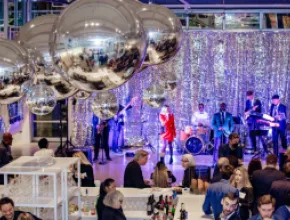Looking away from the high-rises and busy expressways, visitors will see that the Korean capital has been hard at work on developing green spaces to make its landscape more environmentally friendly. Recent projects such as the Cheonggyecheon Restoration Project increased green space, and the Seoul Green Trust campaign is also expanding parks around the city. Here’s where to get green.
Seoul Forest
Opened to the public in 2005 after more than two years of construction, Seoul Forest includes 400,000 trees and 100 types of animals. The forest is divided into five areas: Cultural Art Park, Ecological Forest, Nature Experiencing Studying Field, Wetlands Ecological Field, and Han River Waterside Park.
Mount Bukak
Surrounded by a Joseon Dynasty fortress wall, this mountain was used as an infiltration route by North Korean agents who wanted to assassinate South Korea’s president in 1968. It was then closed to the public for almost 40 years before recently reopening. Proof can be seen on a tree behind the Blue House, the official residence of South Korea’s president, which bears 15 bullet holes. These days, the main attraction is the observatory. It offers some of the best views of the city, with Seoul Tower and Seoul's downtown to the south and Mount Bukhan to the north.
Namsan Park
Located in the center of Seoul, the greenery offers rest from the busy city life. People come here to take walks around the park, enjoy the views from the observatory and visit the Botanical Gardens.
Sky Park
Created as a commemoration of the World Cup, this park stands next to the Seoul World Cup Stadium. Another good example of the efforts that have been put into making Seoul greener, this park was a former landfill turned into an ecological park.





